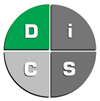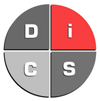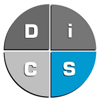To be happy, you need to hit your “bullseye career”
Have you ever wondered if there is a career out there that you would absolutely love? You know you are interested in certain things, but can they be found in the workplace , a single job or even a lifetime career? And how do you find out exactly what those interests are, and what kind of jobs incorporate them? How do you find a career that hits the target of all your interests? How do you find one that hits the bullseye?
To answer these questions, I made up a “bullseye” or “target” career defining method for interpreting the Strong Interest Inventory (SII). I will explain “bullseye career targeting” method after giving a little background of Strong Interest Test.
The Strong Interest Inventory is the best career interest test on the market. It uses John Holland’s theory, which articulates 6 interest themes (called Holland Codes) into which he divides the world of work and breaks these themes down further into 30 interest areas before ranking 130 occupations. Section 2, the “Career Interest Areas,” containing the 30 work interests, is arguably the most helpful and important part of the Strong Test. Most importantly, it applies equally well for career changers as for college students.
If you’ve ever taken this interest test, you’ll remember that this is the page with “Top Five Interest Areas” section, accompanied by six sets of bar graphs rating your career interests in different categories within each of the 6 themes (the themes being “Realistic,” “Investigative,” “Enterprising,” “Artistic,” “Social,” and “Conventional”).
The values on the bar graphs are assigned a level, varying between “Very Little” to “Very High” interest levels. Your top five highest interests areas are displayed above the graphs, in the aforementioned “Your Top Five Interest Areas” box.
Each person’s top five interests are unique: yours will be different even from your best friend or your most enjoyable co-worker. The top interests that come up for you can be interpreted as your fulfillers, satisfiers, and energizers. In contrast, your bottom three interest categories would, therefore, be your stressors, fatigue’s, and dissatisfiers.
If you can find a career that includes all of your top 5 interests you can be guaranteed that you’d LOVE your career. It is rare to be able to find a single job that does that, however. Even if you can’t find a job containing all 5, you should then to find a way to incorporate them into your personal life if you wish to enjoy your life. These top interests are your “happy factor”. Isn’t it nice to know that there is a test out there that can help to tell you what will make your happy in work and in life?

This is the type of target shape I use for my bullseye method
But, what about the 25 other interest categories you don’t see in your top 5? I like to review them in two ways. First of all, I like to see if there should be exactly 5 interest categories that qualify for your unique top interests. And secondly, I like to see exactly how strong your top 10 interests are. To review these in a meaningful way, I first draw out a target on a piece of paper, made of three concentric circles. This is the career target – your career target tool.
In the innermost circle, the “bullseye,” is where I write your highest career interests. I don’t just limit them to your “Very High” interest scores, though. In some cases, the highest level scored will be just “High”. These highest interests are placed in the bullseye of the career target.
From there, I move to the next circle out on the career target. Here, I write the areas that fall into the next natural break in scores. Sometimes, these are in the same “High” category but are lower in ranking. Other times, these fall an entire scoring level lower. You see, each person’s distribution of interests is profoundly unique. Regardless, there always seems to be a natural division within the top 5 interest categories between the “bullseye” career interest center and the next target circle.
Finally, in the outermost circle, I write the career interests in which you scored high but not as high as in the other 2 interest circles. Sometimes, there is absolutely no “outer circle” career interests. Other times, none fall in the middle circle. On occasion, there is a longer list than the designated top 5. For example, I had a client who had 2 bullseye career interests, 2 middle career interests and 5 outer ring career interests. Instead of having just 5 career interests, this client actually had 9 top career interests she needed to find expression for to be happy in her life.
For people like this or who have diverse interests, I always recommend taking The Highlands Ability Battery since such a career interest profile indicates the person has, what are referred to as “driving” abilities. Driving abilities unconsciously demand expression — let me repeat: “unconsciously DEMAND” – and therefore these are critical to know for life and career happiness.
The career target diagram is laid out in said fashion which makes it easy to see what you need to aim for in a career if you want to love it. To hit “the career bullseye” with a single job, you will include all of the areas in which you maintain a very high interest level. It is even better to hit a career that encompasses the middle and outer circle also. If you can find such a career, you will have hit your “career bullseye” – a work you’ll love doing for a lifetime.
The goal of my “Bullseye Career Method” or “Career Target Method” is to visually show you how to find your career happiness. The more of the target that can be included in the career you decide to pursue, the happier you will be. Your career will be fulfilling, satisfying, and you will be fully energized to perform in it, if you are able to hit the bullseye.
A good career coach with superior training in the interpretation of the Strong Interest Inventory will be able to help to (1) identify exactly which career interests fall in each ring of the circle, (2) explain more in-depth what each of your top interest areas means, and (3) find ways that you can take something you are interested in and turn it into a career. That can be a difficult gap to bridge, but an expert career coach can do just that with you and your Strong Interest Test results.
For expert career help, including interpretation of the Strong Interest Inventory, click here.




